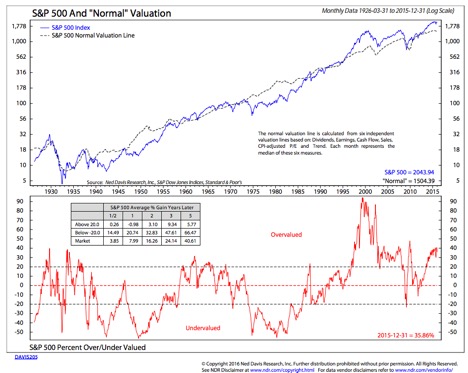Know What You Can Control as an Investor
Understanding the economy is important, but smart investing focuses on costs, tax effectiveness and other factors.

So far in 2016, many of the comments we've received from clients, friends and acquaintances express frustration with the current economic and political environment for investors. The resurgence of volatility in the post-quantitative-easing world and uncertainty in many parts of the globe, politically and economically, exacerbated by the impact of plunging prices of oil and other commodities seem at odds with the healthy and growing global economy.
One of the quotes frequently attributed to Warren Buffett says, "Investing is simple but not easy." My interpretation of his comment is that many things get in the way of investing: investor psychology, fuzzy data, costs and sometimes just silly thinking.
Successful investing requires understanding what matters and, at the same time, recognizing what you can control. The intersection of and distinctions between these two concepts are important to identify when making portfolio decisions. For example, the ability to control what the economy does or doesn't do, whether the various marketplaces for investments will be favorable or unfavorable, what inflation will be and what new geopolitical events may pop into our world are impossible to know with any degree of precision. Yet we can't get enough of those opining their view of these topics. If they knew for sure what was coming, they would most likely keep their knowledge private in order to capitalize on the secret sauce.
From just $107.88 $24.99 for Kiplinger Personal Finance
Become a smarter, better informed investor. Subscribe from just $107.88 $24.99, plus get up to 4 Special Issues

Sign up for Kiplinger’s Free Newsletters
Profit and prosper with the best of expert advice on investing, taxes, retirement, personal finance and more - straight to your e-mail.
Profit and prosper with the best of expert advice - straight to your e-mail.
While the previous paragraph might lead you to conclude that this information is useless, it is not. It is helpful in framing the construction of a portfolio based on things that we can, in fact, control. Keeping the macroeconomic context in mind, focusing on four controllable factors can increase the effectiveness of a portfolio and its overall probability of success. These controllable factors are:
1. Valuations
Whether we are buying a private residence, business or other type of investment, common sense tells us that paying an expensive price will likely lead to a less than favorable outcome. At the same time, buying assets at a reasonable or possibly undervalued price will most likely lead to a favorable outcome.
The chart below by Ned Davis Research shows the impact that valuation has on returns using a mix of five valuation metrics. Note the lower clip of the chart and the red line as it fluctuates between undervalued, fair value (between the upper and lower dashed lines) and overvalued. The box in the lower clip indicates how Standard & Poor's 500-stock index has delivered returns in the past, on average, when valuation metrics are at certain levels. The returns are cumulative not annualized.

Valuations matter and have a large impact on what reasonable returns can be expected. Of course, this does not guarantee those results, but it does provide some important clues. Does this mean that the S&P 500 should be totally avoided? No, but it does suggest that overweighting this singular asset type may not be helpful in constructing a high-probability portfolio. Other asset classes may provide better risk-return characteristics and would likely deserve a higher relative weighting from your base allocation model.
2. Costs
Of course, costs are a drag on portfolio performance, and you should try to make sure the costs incurred are not only reasonable but also deliver value. That can be harder to find if traditional core equities are only delivering mid-single-digit returns. In that scenario, active managers must deliver a significant excess return to offer value over a passive index fund or exchange-traded fund to compensate for their higher fees. For example, when a fund charges an expense ratio of 1%, if its gross return is 10%, the fee equals 10% of the return, but if its gross return is just 5%, the cost eats up 20% of the return. The burden of proof is on active managers, and their hill to climb has become much steeper in the likely low-return environment for long-only equity strategies.
3. Volatility
You may be under the impression that you have no control over volatility—and when it comes to the stock market, you are correct. Long-only equity strategies are volatile, there is never a good time for down drafts in the market and drawdowns come usually at the worst time. As if there were ever a good time!
Fortunately, investing is not necessarily restricted to long-only stocks, bonds and cash. Well-selected non-traditional strategies can reduce fluctuation in the portfolio dramatically and preserve capital during stressful times. Strategies such as market-neutral, long-short and managed futures add value by muting the impact of portfolio volatility. Absolute-return strategies, including private lending, real estate and private equity, provide additional characteristics and engines of return that add to the effectiveness of your portfolio.
4. Tax Effectiveness
No one likes to pay taxes, but doing it effectively can make it an easier pill to swallow. I prefer to use the term tax effectiveness over tax efficiency. Tax efficiency implies you should reduce taxes to the absolute lowest level they can be. Unfortunately, this too often leads to good short-term but lousy long-term decisions when it comes to taxes.
For example, tax loss harvesting each year can lead to lowering the overall cost basis of the portfolio. While deferral can be good, one of the items we likely will not have control over is the level of taxation in the future. The lowered tax basis in the portfolio also reduces investment flexibility in the future by having less taxed capital available to meet current needs or to reallocate portfolio positions. Tax effectiveness focuses instead on realizing an attractive after-tax return on capital while preserving maximum flexibility for the long term.
Investors who focus on the things that matter and the factors they have control over can then filter out the increasing level of noise that exists in the investing universe. Increasing your focus on the four factors within your control will lead to a portfolio with increased impact, satisfaction and results.
Bob Klosterman, CFP, is the Chief Executive Officer and Chief Investment Officer of White Oaks Investment Management, Inc., and author of the book, The Four Horsemen of the Investor’s Apocalypse.
Profit and prosper with the best of Kiplinger's advice on investing, taxes, retirement, personal finance and much more. Delivered daily. Enter your email in the box and click Sign Me Up.

Robert Klosterman, CFP® is the CEO and Chief Investment Officer of White Oaks Investment Management, Inc., a fee-only investment management and wealth advisory firm. Bob is the author of the book, "The Four Horsemen of the Investor's Apocalypse. White Oaks has been recognized by CNBC.com as one of the "Top 100 Fee-Only Wealth Management firms in the country.
-
 CD Maturing Soon? Here's What to Do Next
CD Maturing Soon? Here's What to Do NextThese strategies of what to do when you have a CD maturing soon will have you maximizing returns even with rate cuts.
-
 How to Make 2026 Your Best Year Yet for Retirement Savings
How to Make 2026 Your Best Year Yet for Retirement SavingsMake 2026 the year you stop coasting and start supercharging your retirement savings.
-
 You Saved for Retirement: 4 Pressing FAQs Now
You Saved for Retirement: 4 Pressing FAQs NowSaving for retirement is just one step. Now, you have to figure out how to spend and maintain funds. Here are four frequently asked questions at this stage.
-
 I'm a Financial Planning Pro: This Is How You Can Stop These 5 Risks From Wrecking Your Retirement
I'm a Financial Planning Pro: This Is How You Can Stop These 5 Risks From Wrecking Your RetirementYour retirement could be jeopardized if you ignore the risks you'll face later in life. From inflation to market volatility, here's what to prepare for.
-
 Are You Hesitating to Spend Money You've Spent Years Saving? Here's How to Get Over It, From a Financial Adviser
Are You Hesitating to Spend Money You've Spent Years Saving? Here's How to Get Over It, From a Financial AdviserEven when your financial plan says you're ready for a big move, it's normal to hesitate — but haven't you earned the right to trust your plan (and yourself)?
-
 Time to Close the Books on 2025: Don't Start the New Year Without First Making These Money Moves
Time to Close the Books on 2025: Don't Start the New Year Without First Making These Money MovesAs 2025 draws to a close, take time to review your finances, maximize tax efficiency and align your goals for 2026 with the changing financial landscape.
-
 Is Fear Blocking Your Desire to Retire Abroad? What to Know to Turn Fear Into Freedom
Is Fear Blocking Your Desire to Retire Abroad? What to Know to Turn Fear Into FreedomCareful planning encompassing location, income, health care and visa paperwork can make it all manageable. A financial planner lays it all out.
-
 How to Master the Retirement Income Trinity: Cash Flow, Longevity Risk and Tax Efficiency
How to Master the Retirement Income Trinity: Cash Flow, Longevity Risk and Tax EfficiencyRetirement income planning is essential for your peace of mind — it can help you maintain your lifestyle and ease your worries that you'll run out of money.
-
 I'm an Insurance Expert: Sure, There's Always Tomorrow to Report Your Claim, But Procrastination Could Cost You
I'm an Insurance Expert: Sure, There's Always Tomorrow to Report Your Claim, But Procrastination Could Cost YouThe longer you wait to file an insurance claim, the bigger the problem could get — and the more leverage you're giving your insurer to deny it.
-
 Could a Cash Balance Plan Be Your Key to a Wealthy Retirement?
Could a Cash Balance Plan Be Your Key to a Wealthy Retirement?Cash balance plans have plenty of benefits for small-business owners. For starters, they can supercharge retirement savings and slash taxes. Should you opt in?
-
 7 Retirement Planning Trends in 2025: What They Mean for Your Wealth in 2026
7 Retirement Planning Trends in 2025: What They Mean for Your Wealth in 2026From government shutdowns to market swings, the past 12 months have been nothing if not eventful. The key trends can help you improve your own financial plan.